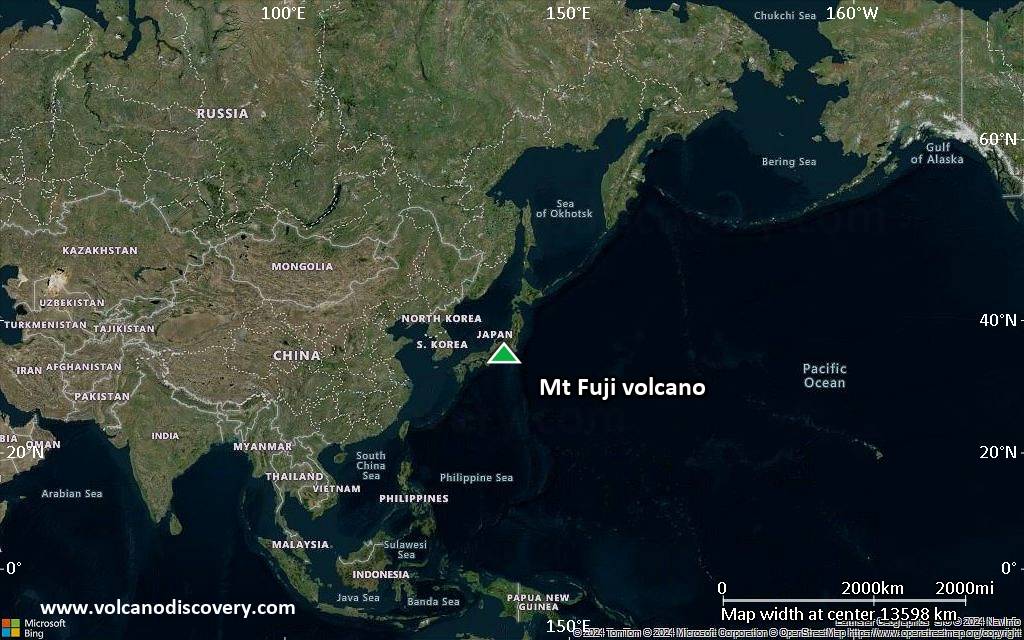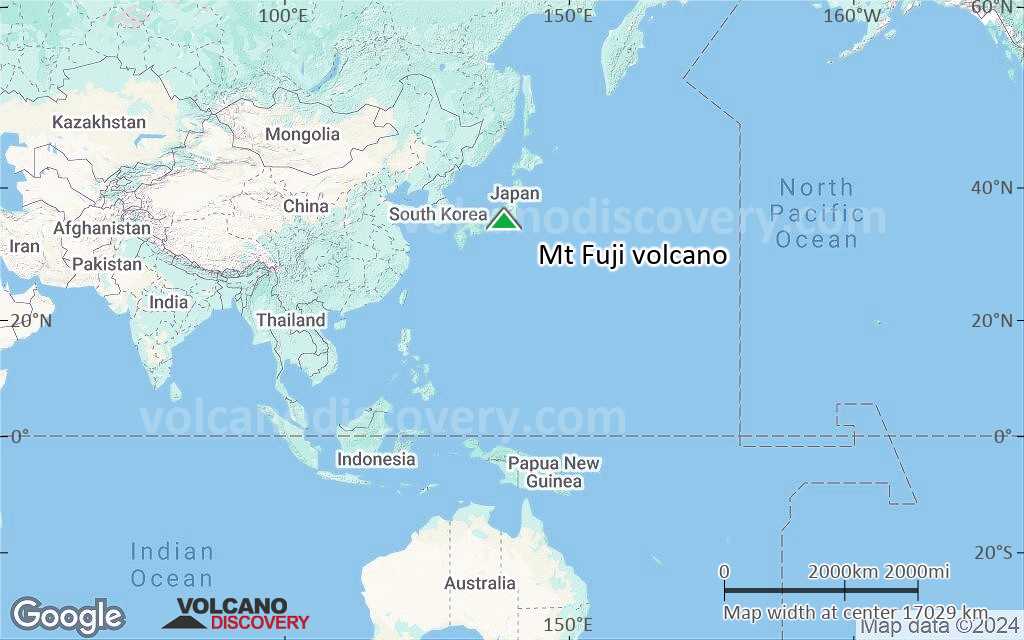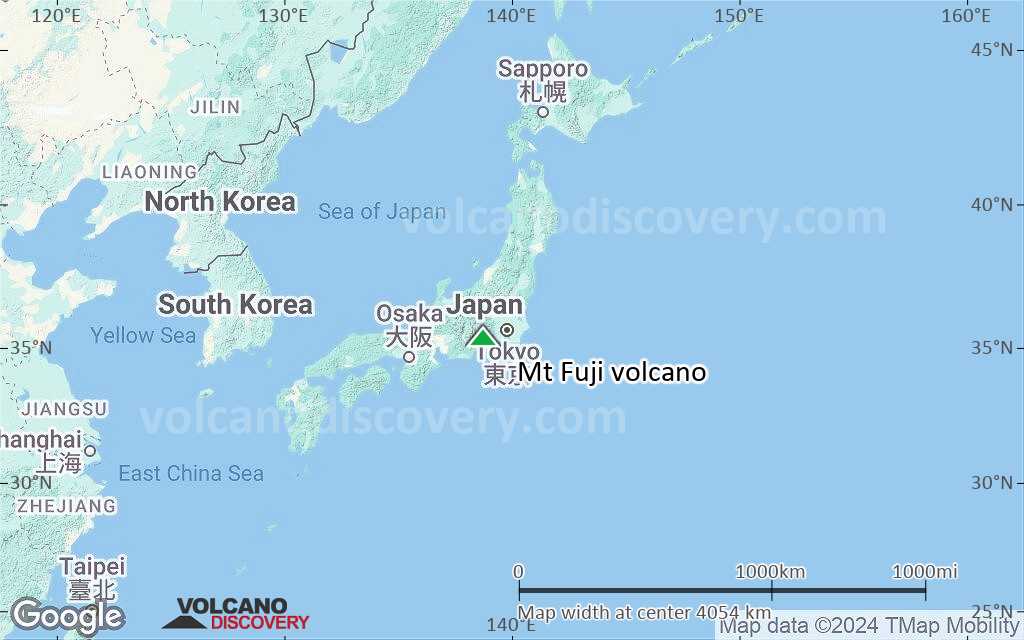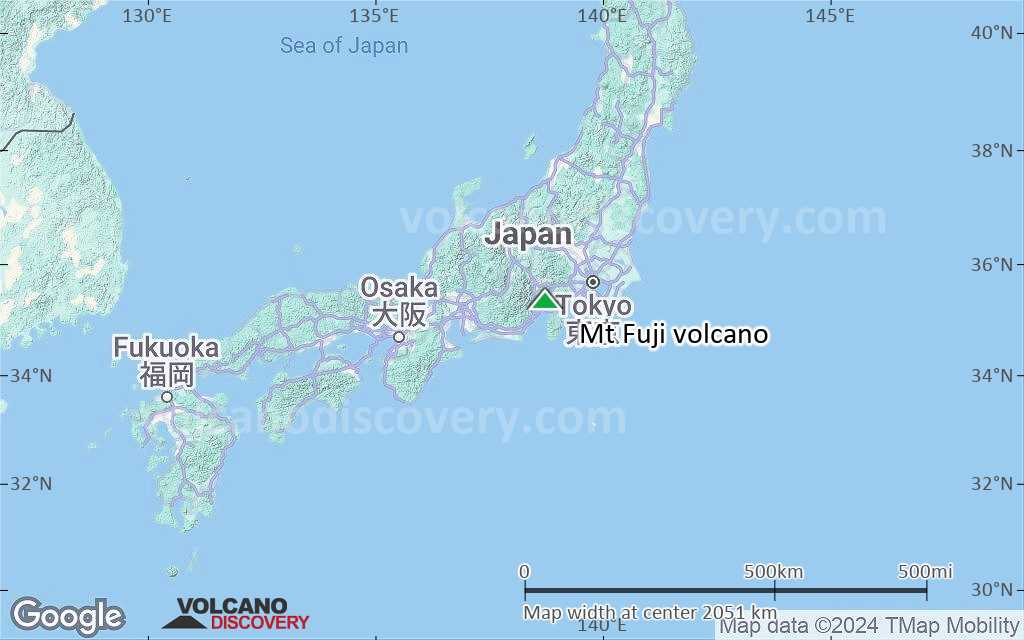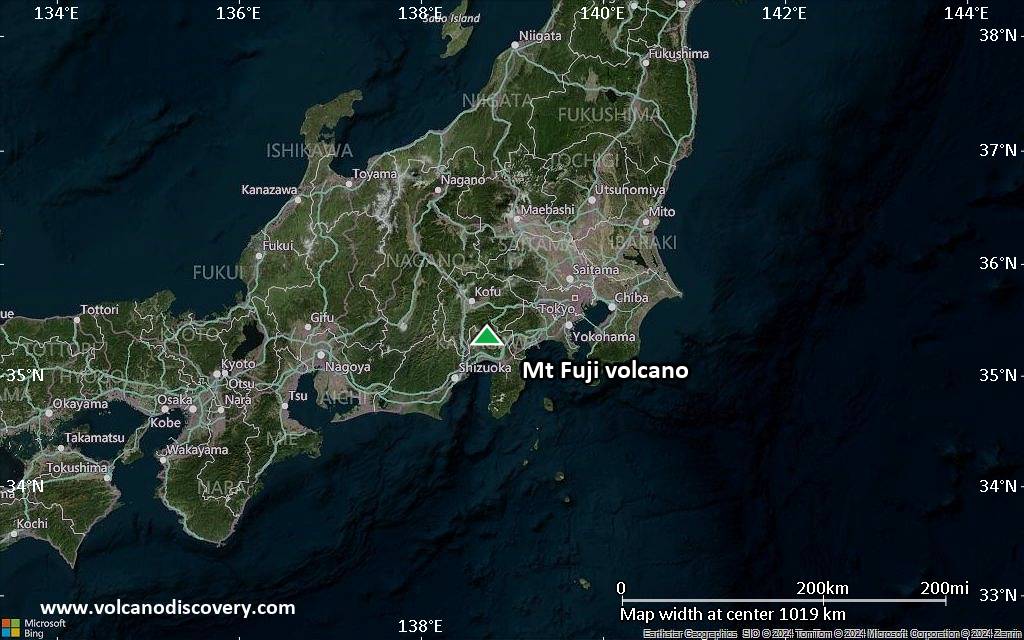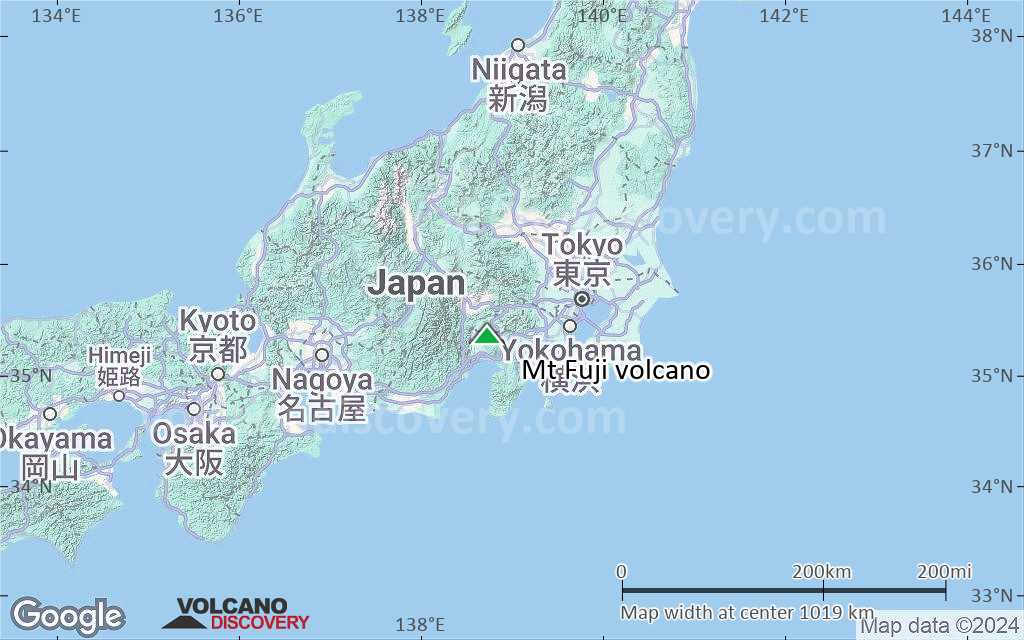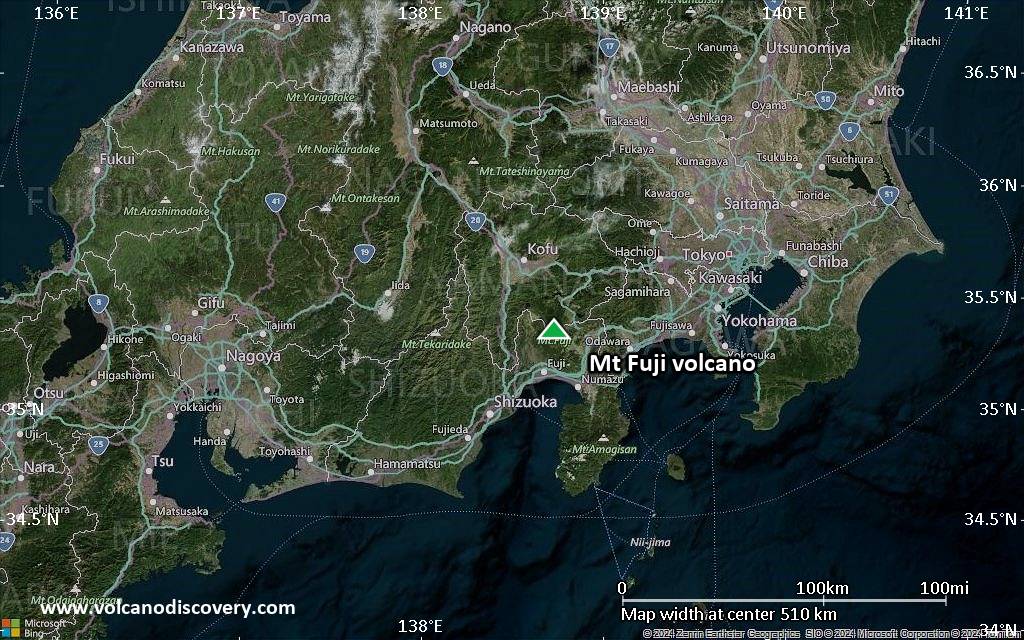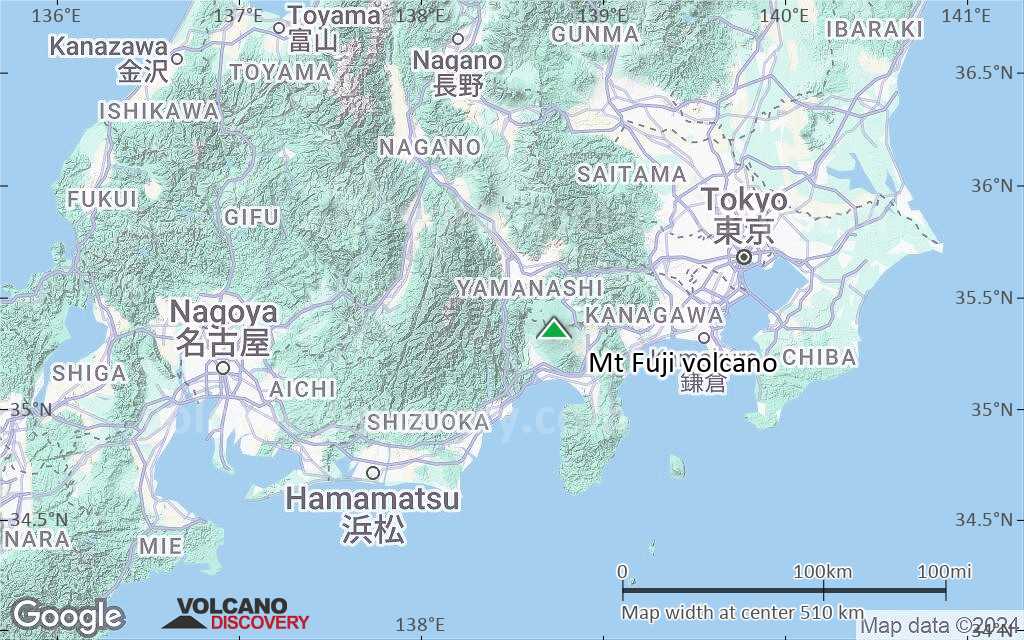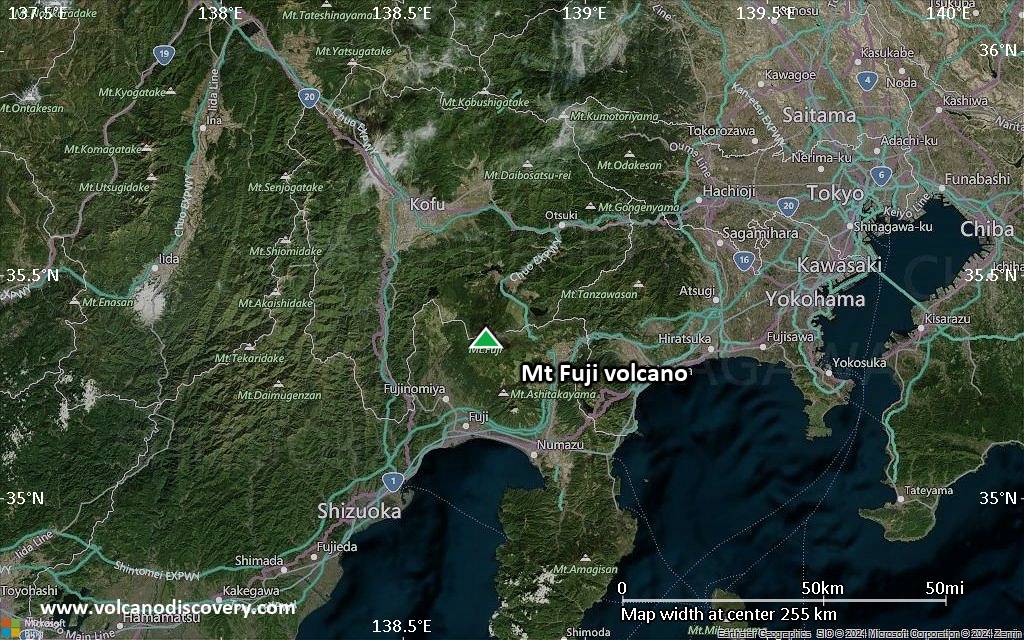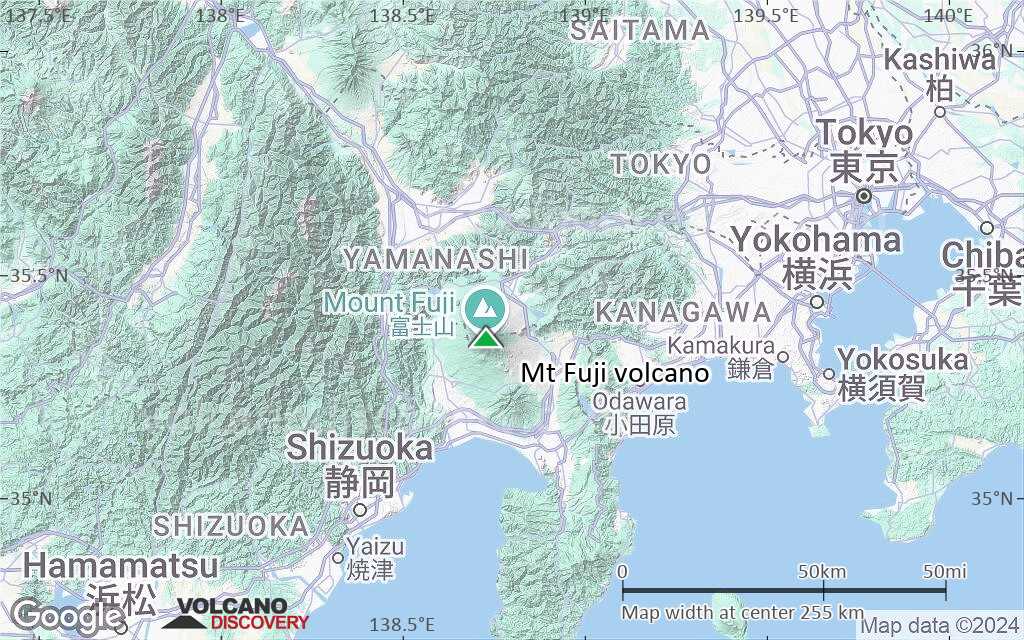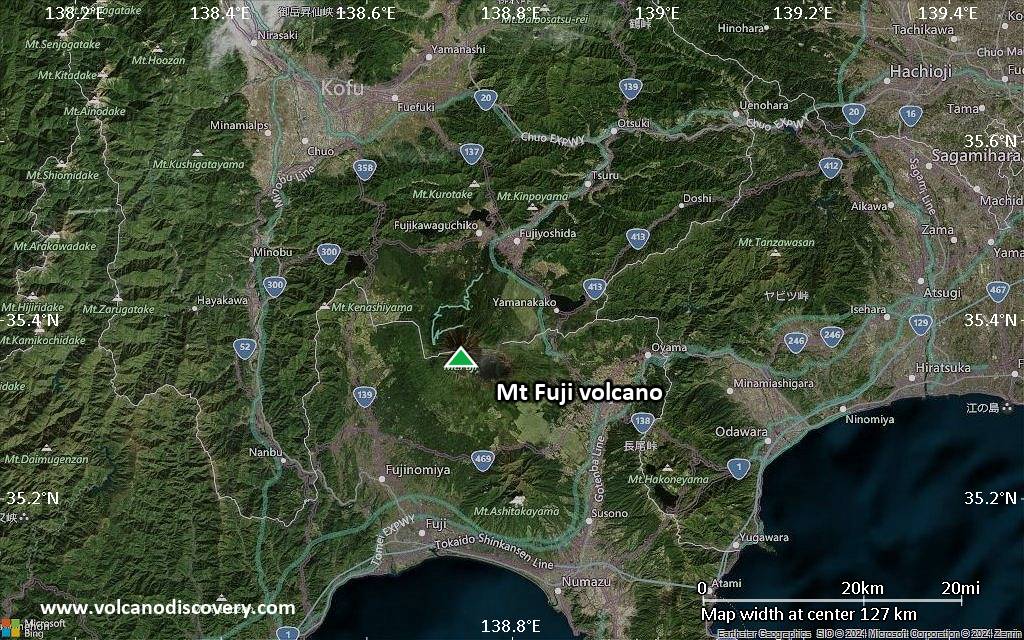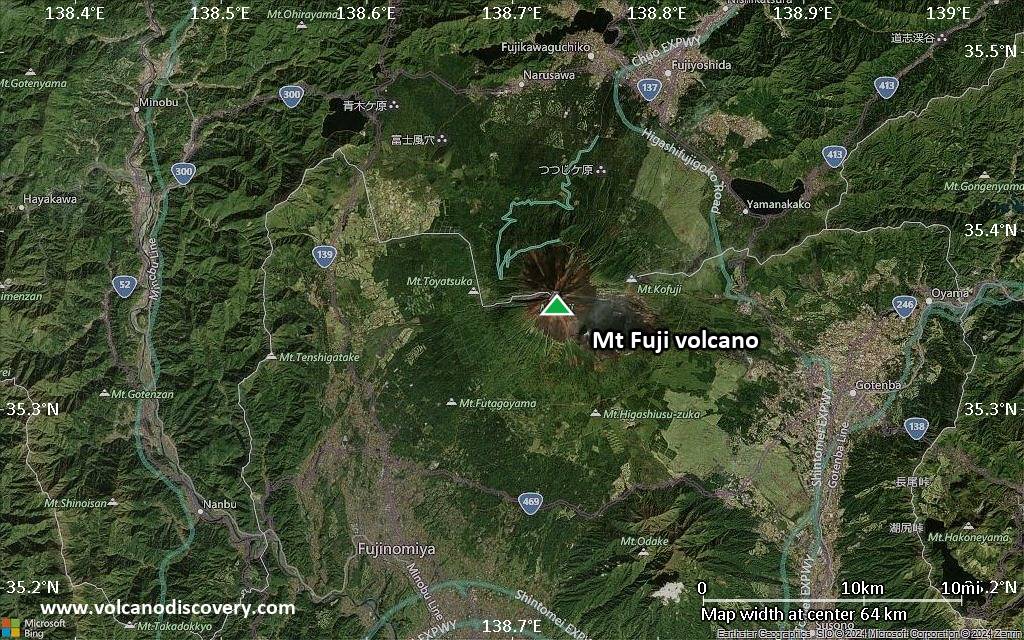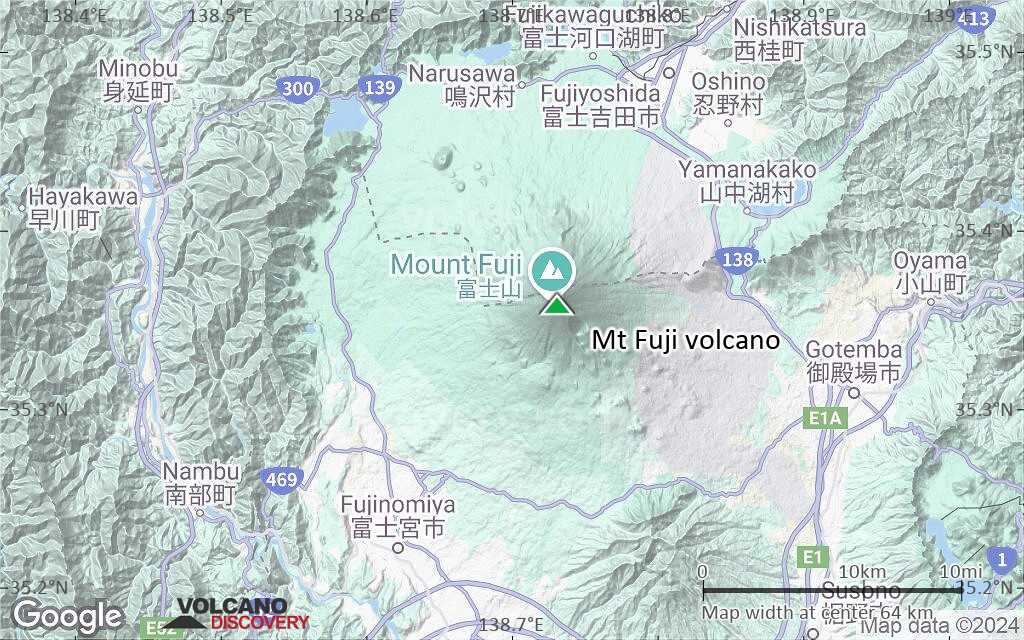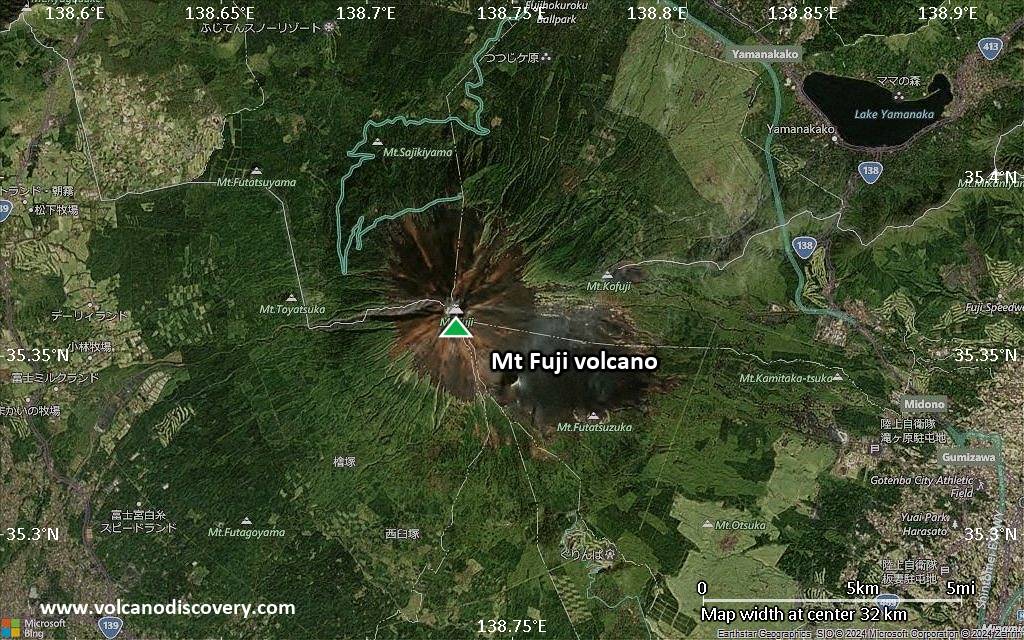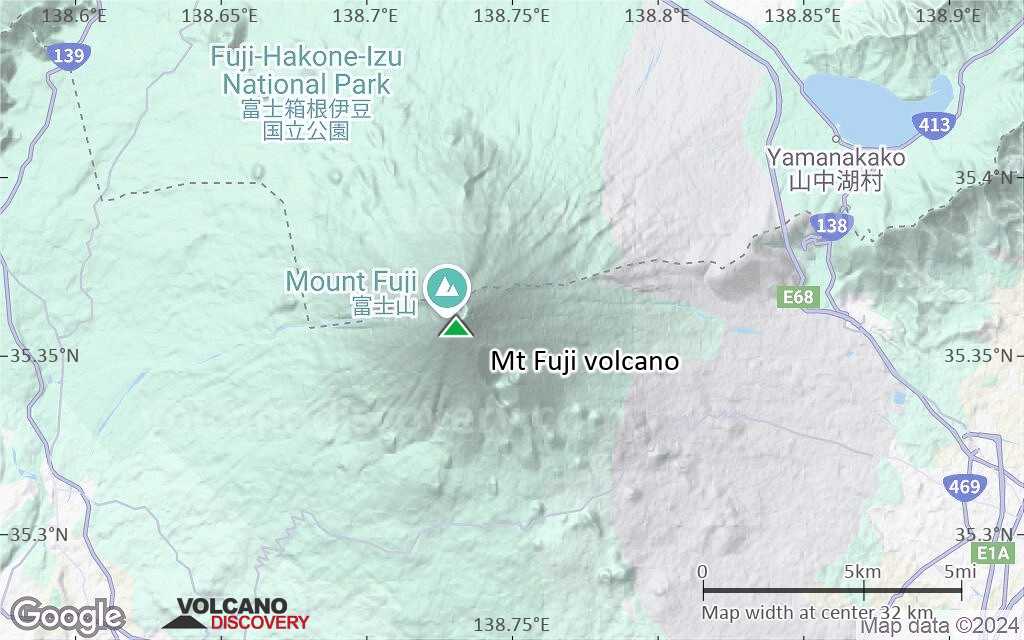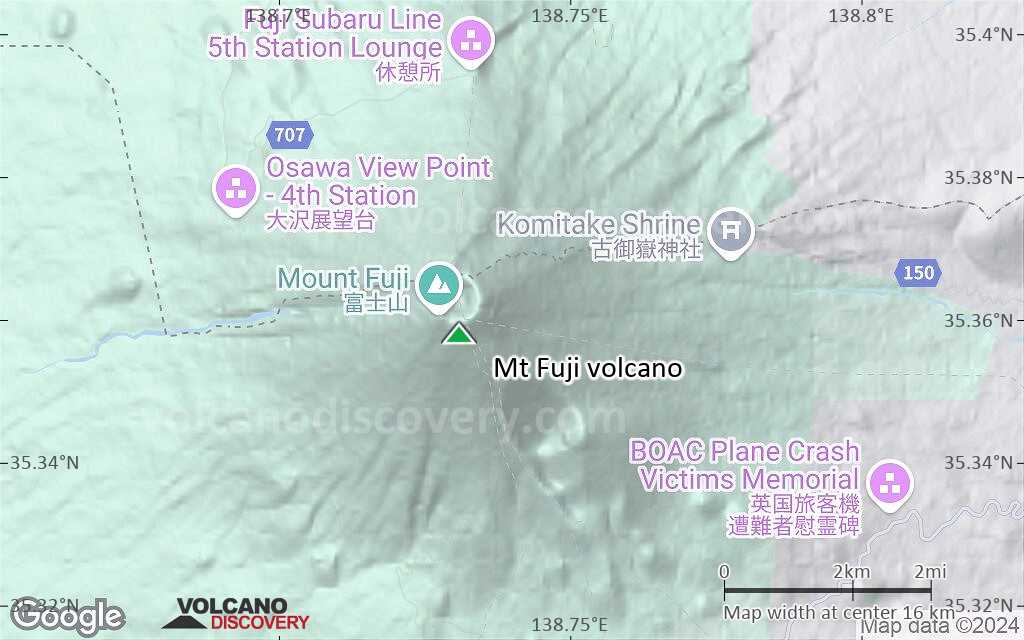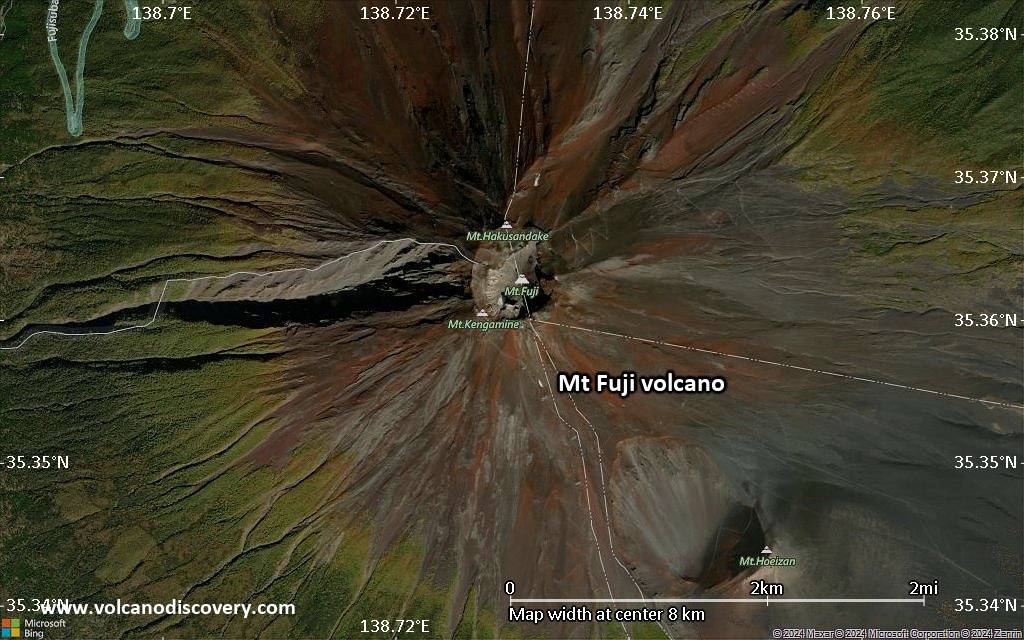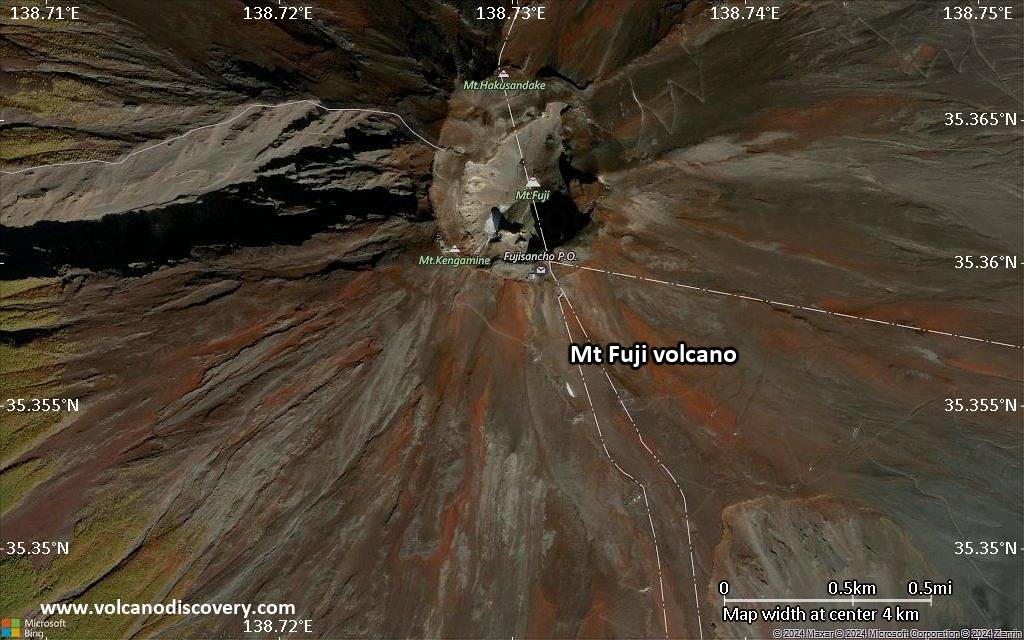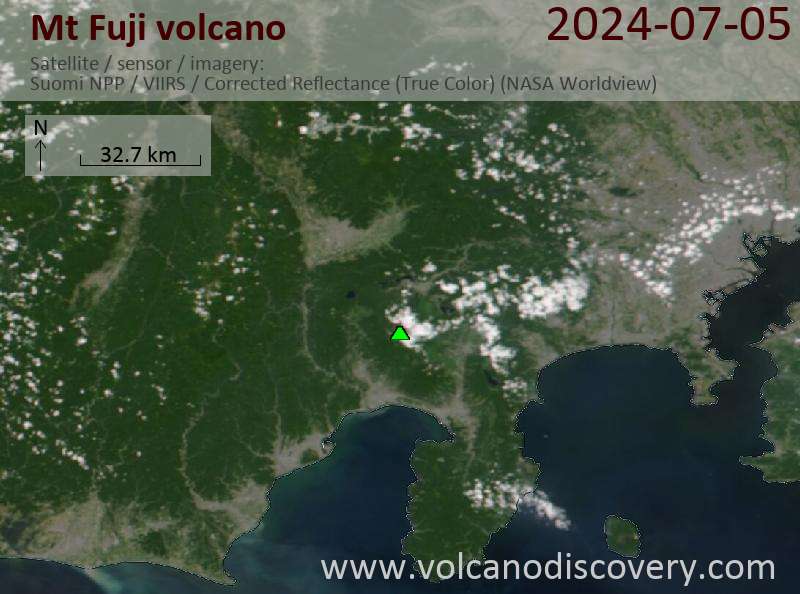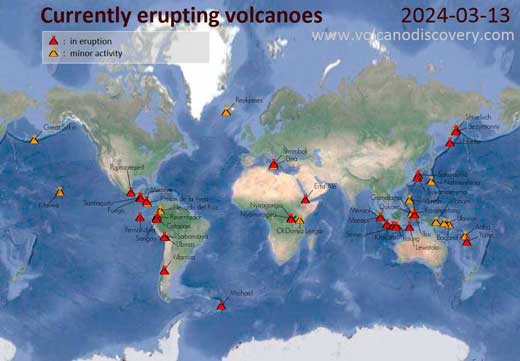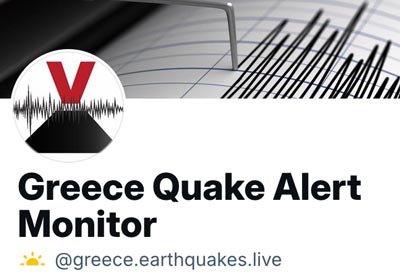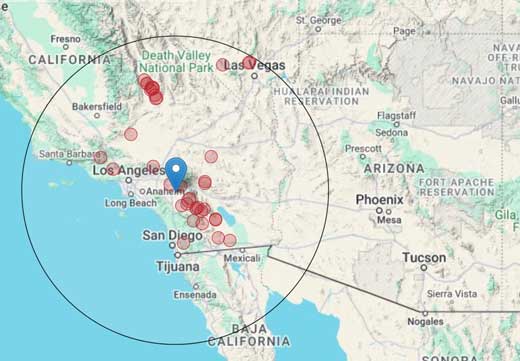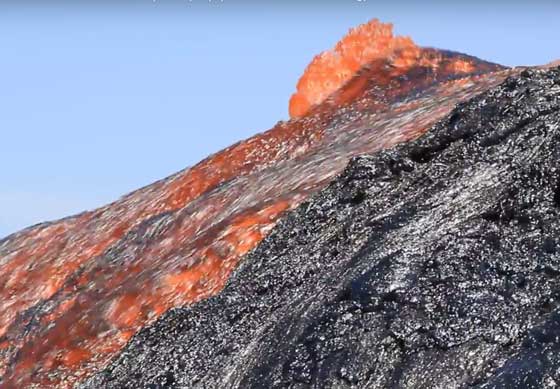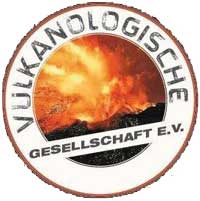Mt Fuji Vulkan
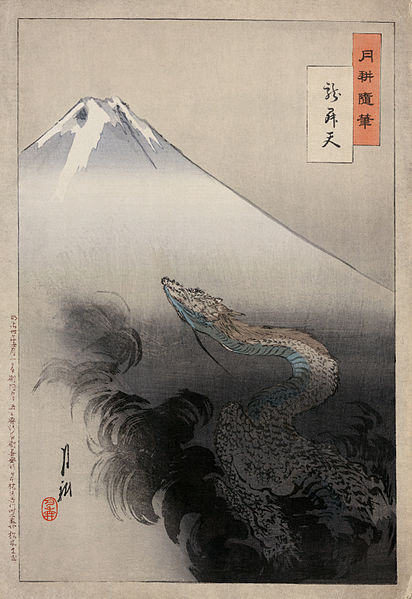
Mount Fuji (Fuji-san, 富士山 in Japanese) is the highest volcano and highest peak in Japan and considered one of the 3 Holy Mountains (along with Mount Tate and Mount Haku). Fuji is a perfect, beautiful stratovolcano about 60 miles south-west of Tokyo, with an exceptionally symmetrical shape making it into famous symbol of Japan and an important element in Japanese art. It is a popular destination for excursions. More than 200,000 people climb to the top of the Mt Fuji every year. The last eruption of Mt Fuji was in 1707–08. Between 2000 and 2001, seismic activity under the volcano was at slightly elevated levels, rising concern about a possible reawakening of the volcano.
Ausbrüche des Mt Fuji: 1707-08, 1700, 1627(?), 1560, 1511, 1427(?), 1083, 1032, 1017(?), 999(?), 993(?), 952(?), 937(?), 932, 870, 864-65, 830, 826, 802, 800, 781
Letzte Erdbeben in der Nähe
| Datum und Uhrzeit | Mag / Tiefe | Distanz / Ort | |||
|---|---|---|---|---|---|
| 24. Apr. 00:09 (GMT +9) | 0.3 1.9 km | 25 km südöstlich | Info | ||
| 23. Apr. 14:13 (GMT +9) | 0.1 1.6 km | 29 km nordöstlich | Info | ||
| 23. Apr. 10:19 (GMT +9) | 0.7 26 km | 29 km nordöstlich | Info | ||
| Dienstag, 22. April 2025 GMT (1 Beben) | |||||
| 23. Apr. 02:28 (GMT +9) | 1.1 21 km | 27 km nordöstlich | Info | ||
| Montag, 21. April 2025 GMT (1 Beben) | |||||
| 22. Apr. 00:49 (GMT +9) | 0.5 26 km | 27 km nordöstlich | Info | ||
| Sonntag, 20. April 2025 GMT (3 Beben) | |||||
| 21. Apr. 08:15 (GMT +9) | 2.3 20 km | 28 km nordöstlich | Info | ||
| 21. Apr. 05:17 (GMT +9) | 0.1 22 km | 24 km östlich | Info | ||
| 21. Apr. 04:56 (GMT +9) | 0.7 22 km | 27 km östlich | Info | ||
| Dienstag, 15. April 2025 GMT (2 Beben) | |||||
| 16. Apr. 08:32 (GMT +9) | 0.9 23 km | 26 km nordöstlich | Info | ||
Beschreibung
Mt Fuji has a complex geologic origin. The large stratovolcano has a base diameter of almost 50 km and culminates in a 500 m wide and 250 m deep summit crater. The volcano overlies several older volcanoes, whose remnants form irregularities on Fuji's symmetrical profile, including Komitake and Ko-Fuji (Older Fuji) which was active 100,000 - 10,000 years ago.The present-day, mainly basaltic edifice started to grow about 11-8,000 years ago when large lava flows were erupted that still form 25% of the volume of the edifice today.
From 8000 to 4500 years ago, Fuji's activity was mainly explosive before another effusive cycle took place between 4500 to 3000 years ago. In the past 3000 years, large explosive eruptions occurred in between phases of milder effusive activity. From 3000 to 2000 years ago, most eruptions took place at the summit, while a large number of flank eruptions occurred during the past 2000 years, forming more than 100 flank cones.
The last confirmed eruption of Mt Fuji took place in 1707 and was Fuji's largest during historical time. It deposited ash as far as present-day Tokyo and formed a large new crater on the east flank.
(Source: USGS / GVP)
Mt Fuji Volcano Photos
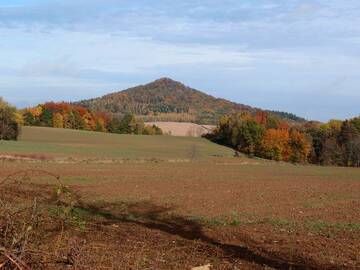
Bedeutende Vulkanausbrüche: Mt Fuji volcano
Additionally, there are 9 uncertain or discredited eruptions from Mt Fuji volcano.
| Datum | Hinweis | VEI | Todesopfer | Schaden | |
|---|---|---|---|---|---|
?? | Unsicherer Ausbruch | ? | unbekannt | ||
?? | Unsicherer Ausbruch | ? | unbekannt | ||
?? | Unsicherer Ausbruch | ? | unbekannt | ||
| SE flank (Hoei Craters) Hist. dokumentiert | 5 | unbekannt | |||
| 1707 Dez 16 (Ausbruch | Hist. dokumentiert | 4 | 1-50 (*) | leicht | Info |
Hist. dokumentiert | 2? | unbekannt | |||
?? | Unsicherer Ausbruch | ? | unbekannt | ||
?? | Unsicherer Ausbruch | ? | unbekannt | ||
Hist. dokumentiert | 2? | unbekannt | |||
| North flank (Onagare lava?) Hist. dokumentiert | 2? | unbekannt | |||
?? | Unsicherer Ausbruch | ? | unbekannt | ||
Hist. dokumentiert | 2? | unbekannt | |||
| Summit, SSE flank (Nishi-Asakizuka) Hist. dokumentiert | 2 | unbekannt | |||
?? | Unsicherer Ausbruch | ? | unbekannt | ||
| South flank ? Hist. dokumentiert | 2? | unbekannt | |||
?? | Unsicherer Ausbruch | ? | unbekannt | ||
?? | Unsicherer Ausbruch | ? | unbekannt | ||
| North flank (Kenmarubi II?) Hist. dokumentiert | 2 | unbekannt | |||
| North flank (Kenmarubi I) Hist. dokumentiert | 2? | unbekannt | |||
Hist. dokumentiert | 2? | unbekannt | |||
| NW flank (Nagao-yama, Kudari-yama) Hist. dokumentiert | 3 | unbekannt | |||
| NW flank (Koriana) Hist. dokumentiert | 2 | unbekannt | |||
Hist. dokumentiert | 2? | unbekannt | |||
| Summit, NE and NW flanks (Tenjin-yama) Hist. dokumentiert | 4 | unbekannt | |||
Hist. dokumentiert | 3 | unbekannt | |||
| NW flank (Kori-ike, Hakudairyuo) | 2 | unbekannt | |||
| South flank (Takabachi) | 3 | unbekannt | |||
| SE flank (Makuiwa, Nishi-Futatsuzuka) | 2 | unbekannt | |||
| SE flank (Kita-Kansu-yama) | 3? | unbekannt | |||
| SE flank (Akatsuka) | 2 | unbekannt | |||
| SSE flank (Obuchi Craters) | ? | unbekannt | |||
| SE flank (Kurotsuka) | 3 | unbekannt | |||
| NW flank (Oniwa-Okuniwa) | 1 | unbekannt | |||
| NW flank (Kita-Koriike) | 2 | unbekannt | |||
| SE flank | ? | unbekannt | |||
| NE flank (Hinokimarubi lava flow) | 2 | unbekannt | |||
| NW flank (Sajiki-yama) | 2 | unbekannt | |||
| NW flank (Ohira-yama) | 2 | unbekannt | |||
| NW flank (Futatsuzuka) | 2 | unbekannt | |||
Ausbrüche des Vulkans Mt Fuji
On 26th October 1707, a new eruption announced itself with a large 8.4 magnitude earthquake devastating Honshu island, followed by several smaller earthquakes felt near Mt Fuji.
The eruption started on 16th December 1707 from a new vent on the SE flank of the volcano erupting a sub-plinian column of ash and pumice, turning into basaltic lava fountaining after 6 hours into the eruption. On the first day of the eruption, 72 houses and 3 Buddhist temples were destroyed in Subassiri town 10 km from the volcano.
Ash fell all over the south Kanto plain, Tokyo, and on areas of the NW Pacific ocean 280 km from the volcano. The total volume erupted over 16 days was estimated to 0.68 cubic km of magma.
Violent explosions were recorded until 25-27 December, before the eruption calmed down and ended on 1st January 1708.
Mt Fuji Volcano FAQ
+When was the last eruption of Mt Fuji volcano?
The last confirmed eruption of Mt Fuji occurred während 1707 - 1708.
+How often does Mt Fuji volcano erupt?
Since 781 AD, Mt Fuji volcano has had at least 15 historically documented eruptions. This means that it erupts on average every 83 years.
Many eruptions of Mt Fuji have lasted more than one year. In total, the volcano has been in eruption during 20 out of 1244 years until now. In other words, Mt Fuji has been active at least one in 62.2 years on average. Note that this value is likely an underestimate, because the known history of eruptions from Mt Fuji is likely incomplete, especially further back in time.
+When was the largest eruption of Mt Fuji volcano?
The largest eruption of Mt Fuji volcano in historic times occurred während 1707 - 1708. It ranks as a plinian eruption with a magnitude 5 on the VEI (Volcanic Explosivity Index) scale. Eruption of this size are often catastrophic on a regional scale.
Neueste Satellitenbilder
Mt Fuji Vulkan Karten
